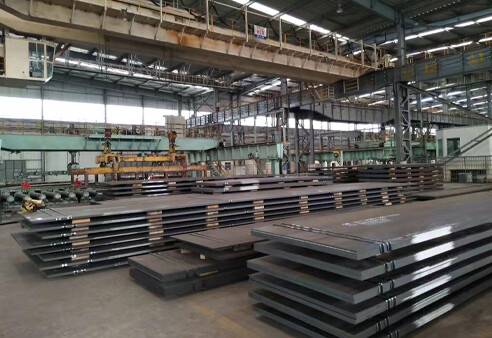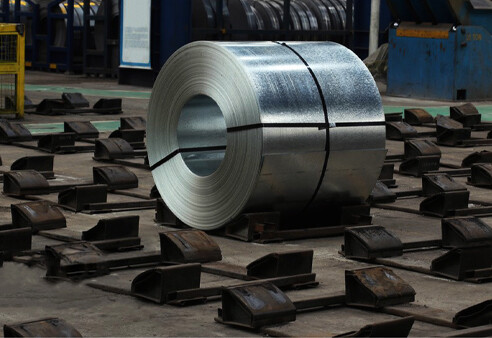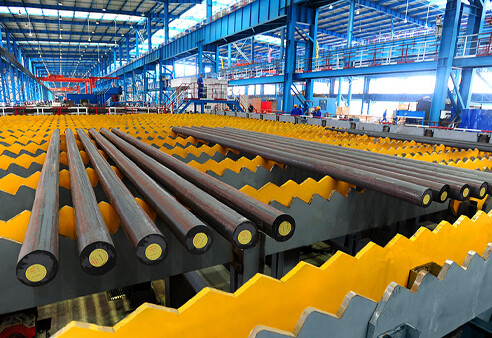 Difference between alloy steel and carbon steel2024-06-06
Difference between alloy steel and carbon steel2024-06-06The difference between alloy steel and carbon steel one, steel definition: steel according to its carbon content and the content of alloy composition differences, can be divided into carbon steel and alloy steel. Also refers to the iron molybdenum, vanadium, titanium, copper, tungsten, aluminum, cobalt, niobium, zirconium and other elements, etc.), some stillcontain some nonmetalic elements (such as boron, nitrogen, etc.) of the steel. According to the amount of alloying elements in the steel, it can be divided into low alloy steel, medium alloy steel and high alloy steel. Steel refers to the steel in addition to contain a certain amount of silicon for deoxidation and meddling (generally not across
0.40%) and manganese(generally not across 0.80%, high content can reach 1.20%) and other alloying elements, wthout other alloying elements (except residual elements) of the steel. According to the content of concave and conve>
and can be divided into low carbon steel(carbon content is generally less than 0.25%), Medium carbon steel (carbon content between 0.25% and 0.60%); High carbon steel (about 0.60% carbon content). But there is no hard border between them. Two, the definition of alloy steel: containing other aloy elements of steel is alloy steel The total content of aloying elements can reach 10-28%, which is high alloy steel Alloy steel is a steelin which in addition to iron and natural elements, other aloying elements are added to change or improve some of the characteristics of the steel. Such as CrNiMnMoVB, etc. Alloy steel contains other metals besides iron and carbon to alter the behavior of the material. Chromium effect is to make steel corrosion resistance, nickel effect is to reduce the austenitizing temperature of stainless steel. Three, carbon steel definition: carbon steel does not contain other alloy elements. Carbon steel also contains less than 1.35% carbon. Carbon steel, that is, in addition to iron, the guessed material generally only carbon, silicon, manganese, phosphorus and sulfur this five years of natural elements, and no other alloy elements. Four, the difference between alloy steel and carbon steel: carbon steel does not contain useful alloying elements, with iron, carbon, manganese as the primary element of the alloy. Machinery is generally inferior to alloy steel. In adlition, the price of carbon steel is much lower than the alloy seamless steel tube lattice, from the above 2 points gusu alloy steel suppliers believe that the function of alloy steel beyond carbon steel is the most important diference.
more Hot dip galvanized and cold galvanized difference2024-06-06
Hot dip galvanized and cold galvanized difference2024-06-06First, essential difference placed zinco connected to the anode electrolytic equipment, processing power, use current from the positive to the negative directional move, deposits a layer of zinc on the workpiece.
Hot-dip galvanizing is also hot dip zinc, which is a method of obtaining metal cover by immersing steel hook into molten zinc solution. It is to remove ol, picking, soaking and drying the workpiece and immerse it in molten zinc solution for time, which can be raised.
Cold galvanizing uses chemical principles to separate zinc alloy into zinc ions, which are attached to the surface of steel. The general zinc layer is thin, and steel is easy to corrosion in the general environment. General cold galvanized steel products and structures for anticorosion, cold galvanized galvanized quantity is very small, only 10-50g per square meter.
As is known to al, the mechanism of atmospheric corrosion resistance of zinc is mechanical protection and electrochemical protection. Under atmospheric corosion conditions, zinc layer surface has ZnO, Zn(OH)2Jl and basic zinc carbonate protective flm, which slows down the corrosion of zinc. This protective film (also known as white rust) wil form a new flm after being damaged. When the zinc layer is seriously damaged and endangers the iron matrix, zinc produces electrochemical protection for the matrix. The standard potential of zinc and iron is -0.76V, and the standard potential of iron is -0.44V. When zinc and iron form microcells, zinc is dissolved as the anode, and iron is protected as the cathode. The formation process of hot-dip galvanizing layer is the process of forming fe-zinc alloy between the iron base and the outer pure zinc layer. During hot plating on the workpiece surace, fe-zinc alloy layer will be formed. In this way, the iron and pure zinc layer will combine well.
Three, the appearance diference on the outside, hot galvanizing looks rough, while cold galvanizing is brighter and smoother.
Application diference between galvanized and hot dip galvanized bolts-how many years can hot dip galvanized bolts remain rust free.
more The current situation and trend of international development of the world's steel companies2024-06-06In today's world economic globalization era, the iron and steel industry still maintains a strong national and regional color, is still in a state of independent war.For many countries, iron and steel is a basic raw material industry with an important strategic position. Whether it is independent or not is related to national security. This mindset leads to the internationalization degree of the iron and steel industry far behind the automobile, petroleum, electronics and other industries.However, in this industry with low degree of internationalization, the overseas investment and transnational operation of enterprises are also developing slowly, especially after entering the 1990s, under the pressure of intense international competition, the internationalization of iron and steel enterprises has entered a stage of rapid development.more
The current situation and trend of international development of the world's steel companies2024-06-06In today's world economic globalization era, the iron and steel industry still maintains a strong national and regional color, is still in a state of independent war.For many countries, iron and steel is a basic raw material industry with an important strategic position. Whether it is independent or not is related to national security. This mindset leads to the internationalization degree of the iron and steel industry far behind the automobile, petroleum, electronics and other industries.However, in this industry with low degree of internationalization, the overseas investment and transnational operation of enterprises are also developing slowly, especially after entering the 1990s, under the pressure of intense international competition, the internationalization of iron and steel enterprises has entered a stage of rapid development.more


Get A Free Quote
What do you want to know, Please contact us




